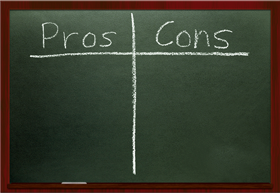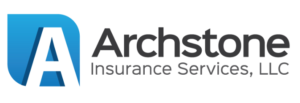 How Does Indexed Universal Life Insurance Work?
How Does Indexed Universal Life Insurance Work?
Indexed universal life insurance (IUL) has become one of the most popular permanent insurance products on the market today. The appeal is that indexed universal life insurance offers the best of both worlds – the potential for upside gain that is linked to stock market returns with downside protection from investment losses. If you are considering an IUL policy, you need to know all of the facts. In this post, we will take an objective look at indexed universal life insurance and show you what to look for in an IUL policy.
How Does Indexed Universal Life Insurance Work?
Indexed universal life policy is a permanent insurance product that contains both an insurance component and an investment component. Your premium is deposited into the policy’s cash account and reduced by policy charges and expenses. The balance of your cash value will be credited based on the performance of various stock market indices, depending on what the insurance company offers for index choices. The S&P 500 is the index most commonly used. These polices allow you to participate in a percentage of the gains in an index (participation rate) up to a certain return (cap rate). Your downside is limited (floor) so that in most cases you will not lose value based on negative returns in the index.
For example, let’s say your policy has a participation rate of 100%, a cap of 10% and a floor of 0% and uses the S&P 500 as its index. If the S&P 500 is up 15% during your policy year, your cash value would be credited by 10% because your gains are capped at 10%. If the S&P 500 is down 15% during your policy year, your cash value would be credited 0% because of the floor. If the S&P is up 8%, your cash value would be credited 8% because it falls below your cap. Indexing allows you to capture gains in the market index without participating in the losses. Also, your gains are always locked in so they can’t be taken away if the markets suffer a substantial loss.
What You Need to Know About Indexed Universal Life Insurance
Higher Cap Rates Aren’t Always Better – Policy cap rates for most products can range anywhere from 8% up to 16%. Is a policy with a 16% cap rate better than the policy with a 10% cap? Not necessarily. In order for an insurance company to offer a higher cap, it will most likely mean that you will pay more for that policy in expenses. The cap rate is just one variable that you should look at in an IUL policy. Expenses, guarantees and other factors need to be looked at closely as well.
Participation Rates, Caps and Expenses Can Change: Your policy will come with cap and floor rate guarantees as well as a cap on the maximum amount of fees the policy can charge. Although there are floors to these variables, they still can change. Just because your policy has a 12% cap rate when you buy it, doesn’t mean it will stay that high. The insurance company can lower the cap in the future as long as it does not go below the floor. This is also the case for the participation rate as well.
Don’t be Fooled by Unrealistic Returns on Your Illustration – Your agent must provide you with an illustration that will show how your policy will perform under a few different scenarios. One is a worst case scenario that shows a minimum rate of return and maximum charges; a scenario that is unlikely but must be shown as the “guaranteed rate”. Another scenario is the “illustrated rate” or the agent-selected rate that cannot exceed the maximum allowable rate set by the insurance company using current expenses. IUL policies are meant to mitigate risk by limiting downside AND upside so you shouldn’t expect consistently high returns. If your agent is showing you returns of 8%-10% on the illustration, there is a good chance your policy will not perform as illustrated. A more realistic return to illustrate is probably closer to 6%.
Indexed Returns do Not Include Dividends – IUL policy returns do not include dividends on the underlying index. The dividend yield on the S&P 500 was 1.9% in 2014 according to FactSet. If you had an IUL policy, your policy did not reflect returns on these dividends. The annual return on an IUL policy is simply determined by index readings on particular policy anniversary dates and does not include dividends.
What to Look for in an Indexed Universal Life Policy
Not all IUL products are the same. These products vary when it comes to expenses, caps, participation rates and guarantees. It is best to look for policies with low loads and fees which will offer a better opportunity to build cash value. Guarantees are also important. It makes sense to look at IUL products that offer no lapse guarantees, death benefit guarantees and minimum return guarantees. There are several companies on the market today that offer these types of guarantees in their IUL products.
Should You Consider an Indexed Universal Life Policy?
If you are looking for permanent coverage, an IUL policy might be a good choice. Unlike variable universal life insurance, which invests your cash value directly in stocks and bonds, indexed universal life insurance gives you the opportunity to capture gains on upside movements in the markets but protects your downside. As long as you have a realistic outlook for the returns on an IUL policy and understand its potential drawbacks, it could be an effective financial tool that can offer protection and cash value growth. If you want to learn more about indexed universal life insurance, email us at info@archstoneagency.com or give us a call at 888-687-9444. We would be happy to show you an illustration and explain how the product works.
About Us
Archstone Insurance Services, LLC is an independent agency that shops over 40 of the top life insurance carriers to provide huge savings on life insurance coverage for our clients. We are happy to answer any questions you might have about any of the insurance products we offer, your planning needs or your existing coverage. Feel free to call us directly at (888) 687-9444 or email us at info@archstoneagency.com.

